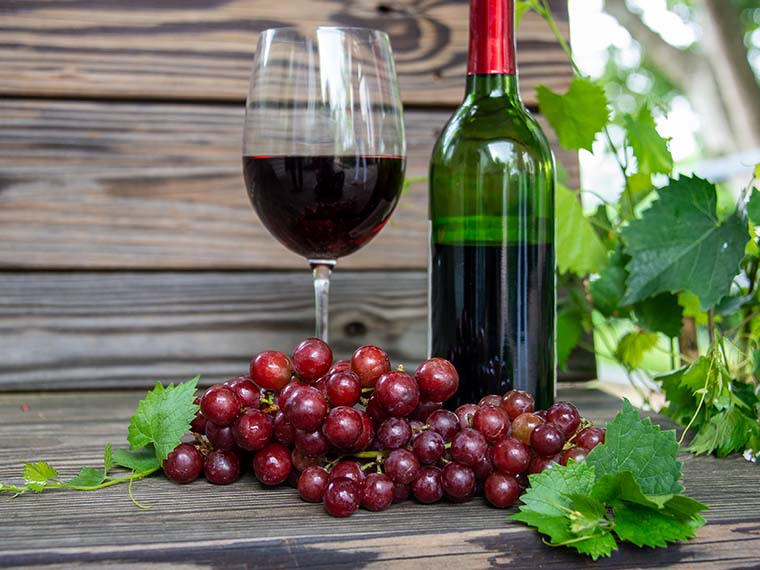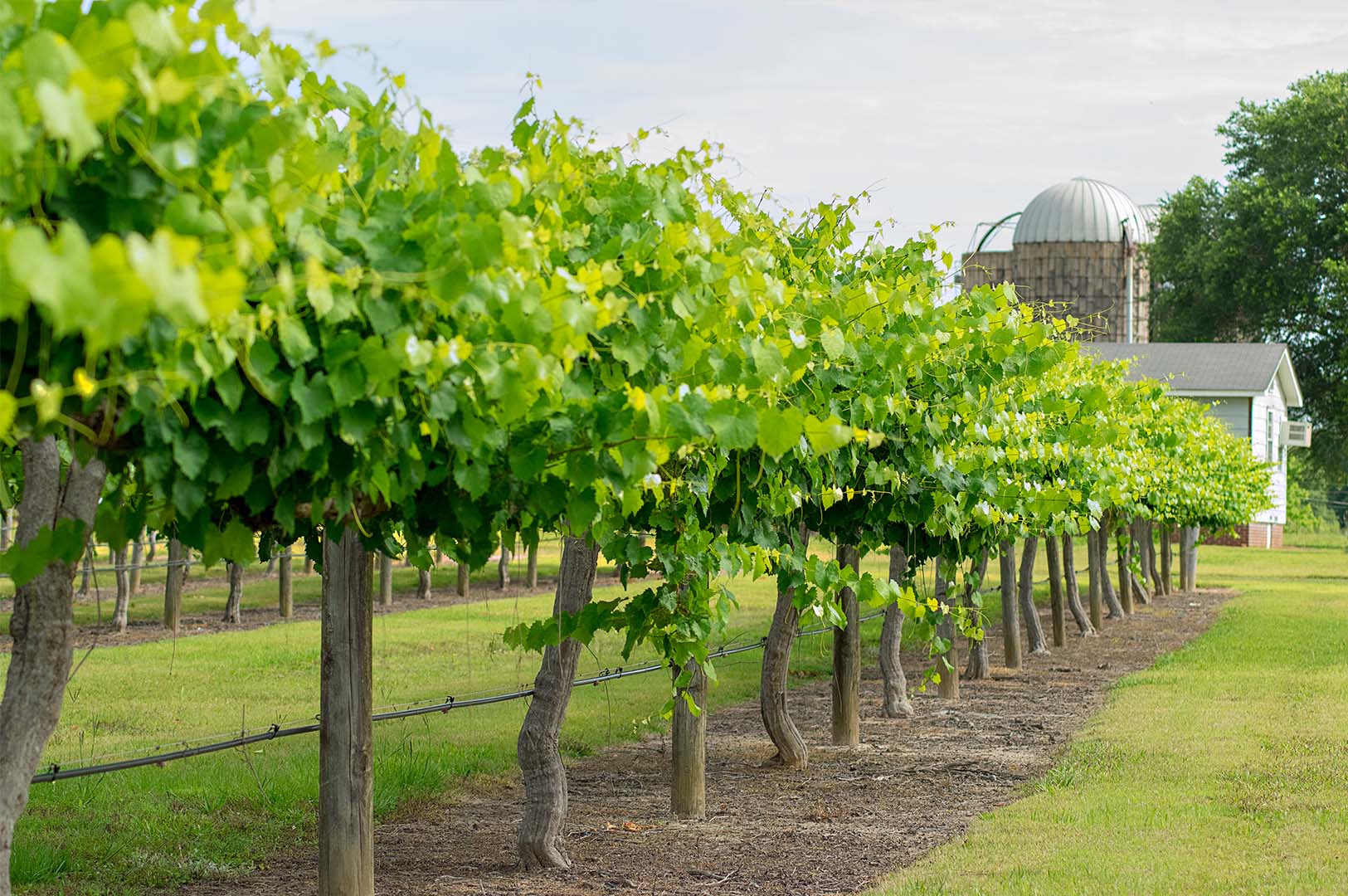The information presented on this page may be dated. It may refer to situations which have changed or people who are no longer affiliated with the university. It is archived as part of Mississippi State University's history.
MAFES scientists are working to bring a sweet treat to Mississippi's farms. Fruits such as bunch grapes, muscadines, and blackberries, are native to the state, but have not had much success in large-scale production due to disease and harvesting difficulties.
Researchers Dr. Eric Stafne, associate extension and research professor in the plant and soil sciences department, and Dr. Sam Chang, professor in the food science, nutrition and health promotion department hope to change that and are attacking the issue from both angles. Stafne has devoted his research to finding better ways to produce vining fruits in Mississippi while Chang is investigating the health benefits of introducing fruits like muscadines-a relative of the grape with thicker skin and larger seeds-into the American diet.
Currently, production that occurs in Mississippi is mostly confined to local farms, and much of the fruit is used for juice, wine and jelly, or set up as a u-pick arrangement where visitors can harvest their own.
"Very few farmers are growing bunch grapes in Mississippi at all and if they are, it is very small-scale, probably five acres or fewer. As far as blackberries go, they are typically u-pick operations or farmers' market sales. Blackberries are in demand, but they are a lot of work to produce. And as for muscadines, production in Mississippi is fairly small-scale. There are a couple larger muscadine farms, maybe 100-plus acres but for the most part farms are not large," Stafne explained.
Several challenges stand in the way of producers who would like to grow these fruits.
"In bunch grapes, we see an endemic disease called Pierce's disease (Xylella fastidiosa), which infects grapes via insect transmission. This is a devastating disease that kills most European grapes, the type used to make most of the wine in the world and also seedless table grapes. Thus, the options available for growing grapes here are limited, but they do exist," Stafne said.
One of Stafne's main research areas has been evaluating bunch grape cultivars to see how they perform in Mississippi.
"Over the last six years I've evaluated about 20 cultivars. What I look for first is survival then after that is disease-resistance, crop loads, and fruit quality. So far 'MidSouth,' a red bunch grape that was released by Mississippi State University in the early 1980s performs well. It is too tart for wine, but is good for jelly. It also has very good disease resistance to Pierce's disease and other fungal diseases, so a homeowner or small farmer could grow it with minimal chemical inputs," Stafne stated.
Blackberry growers also face challenges, in the form of pests and genetic disorders.
"A relatively new pest, the spotted-wing drosophila fruit fly, is causing problems because it is difficult to control and they really like blackberries. There is also a physiological problem called white drupelet disorder, where segments of the fruit develop without pigment, making them unattractive to consumers." Stafne explained.
To combat this disorder, Stafne's research suggests that shade may be key. Stafne has made it a priority to understand this disorder, and won MAFES's most impactful publication this year.
"We know it is genetically based, but is strongly influenced by environment. There is a lot of supposition that it is linked with UV exposure coupled with high temperatures-and my research supports this. When we shaded bushes, the problem was dramatically reduced," Stafne said.
As for muscadines, the biggest difficulty in production is harvest; because muscadines don't grow in bunches, like other grapes, they must be harvested by hand if they are going to be sold ready-to-eat. This can make harvesting expensive and time consuming.
However, Dr. Sam Chang's research on the health benefits of muscadines suggests that it may be worth it.
"Compared to other grapes, muscadines are high in antioxidant properties, meaning they remove unwanted free radicals from the body. They also are abundant in vitamins, fiber, minerals, and phenolics, a class of phytochemical compounds. However, the thing that is unique about them is their ellagic acid content. Ellagic acid has been found to have multiple health benefits, including the inhibition of cancer cells, the prevention of heart disease, and improvement of type-2 diabetes," Chang said.
There are over 300 varieties of muscadine, and so Chang, who also directs the Mississippi Center for Food Safety and Post-Harvest Technology, and colleagues set out to test their varying chemical components for enhancing food safety and quality.
"We compared wine produced from eight, high-yield varieties of muscadines grown in Mississippi in order to determine their phenolic composition and antioxidant activity. There are large variations in phenolic composition between muscadine varieties, which alters both the taste and health benefits, so one of our goals was to narrow down several varieties that would provide wine makers and grape breeders with information for selecting grape varieties," Chang said.
Chang's next step will be determining which portions of the grape contain the highest concentrations of ellagic acid and antioxidants. He also is working to determine the antibacterial, antivirus, and anticancer properties of muscadine grapes cultivated in Mississippi, in the hopes that the research will shed further light on an up-and-coming superfood.
Funding sources include the Mississippi Department of Agriculture and Commerce Specialty Crop Block Grant Program, USDA Agricultural Marketing Service, USDA-ARS Special Cooperative Agreements for MS Center for Food Safety and Post-Harvest Technology, and the USDA National Institutes of Food and USDA Hatch Act funding.


